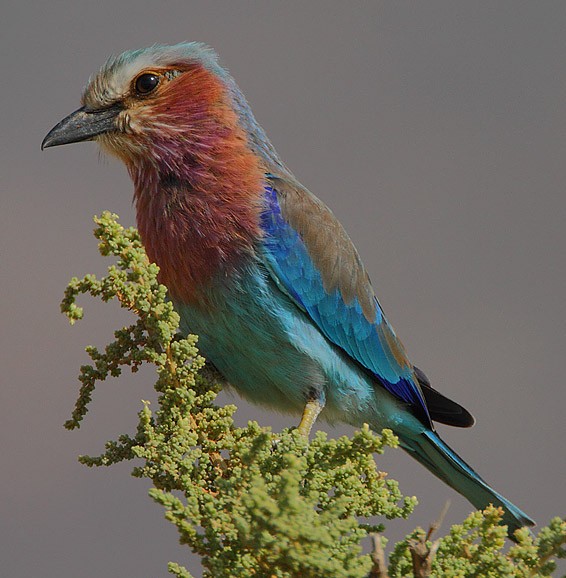Lilac-breasted Roller
A species of Typical Rollers Scientific name : Coracias caudatus Genus : Typical Rollers
Lilac-breasted Roller, A species of Typical Rollers
Botanical name: Coracias caudatus
Genus: Typical Rollers
Content
Description People often ask General Info
 Photo By Steve Garvie , used under CC-BY-SA-2.0 /Cropped and compressed from original
Photo By Steve Garvie , used under CC-BY-SA-2.0 /Cropped and compressed from original Description
The crown to mantle is olive, and the cheeks and ear coverts a lilac-rufous. The throat is lilac, and some lilac-throated rollers have a lilac patch or rufous-brown tinges on the lower abdomen. Both subspecies have long, black outermost tail streamers that are absent in juveniles. Lilac-breasted rollers are not sexually dimorphic though males may be slightly larger than females. 
Size
30 cm
Life Expectancy
14 years
Nest Placement
Cavity
Feeding Habits
Lilac-breasted Roller consumes a diverse diet of arthropods, insects, and small vertebrates, including lizards and snakes. They display unique hunting tactics for ground-dwelling prey, particularly favoring slow-moving or burrowing species.
Habitat
Lilac-breasted Roller favor open savannahs peppered with trees and shrubs, providing ideal high perches for foraging and nesting. They also inhabit rolling bushy game lands, acacia woodlands, and light forests, including riverside woods. With an adaptable range, they reside from sea level to elevations of 2350 meters. Lilac-breasted Roller tend to avoid human settlements, only venturing into cultivated lands and plantations occasionally, usually during dispersal.
Dite type
Insectivorous
People often ask
General Info
Feeding Habits
Bird food type
Distribution Area
Lilac-breasted rollers are found throughout eastern and southern Africa, and occurs locally at sea level, and up to 2,000 metres above sea level or over. Their range extends from the Red Sea coast of Eritrea through East Africa (including Zanzibar) to southern Africa, where they occur commonly in Namibia (excluding the Namib Desert), Botswana, Zimbabwe, and northeastern South Africa. 
Species Status
Not globally threatened.